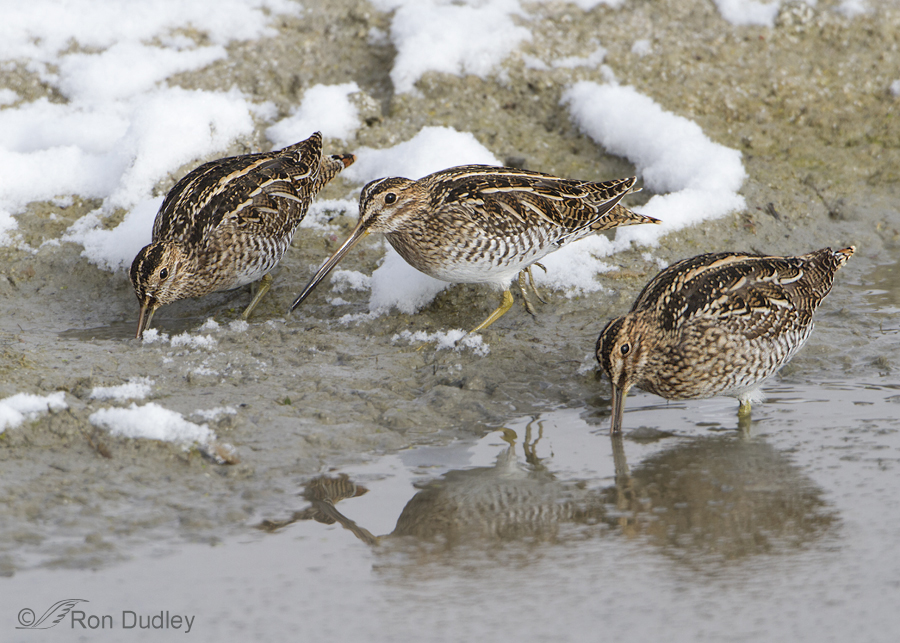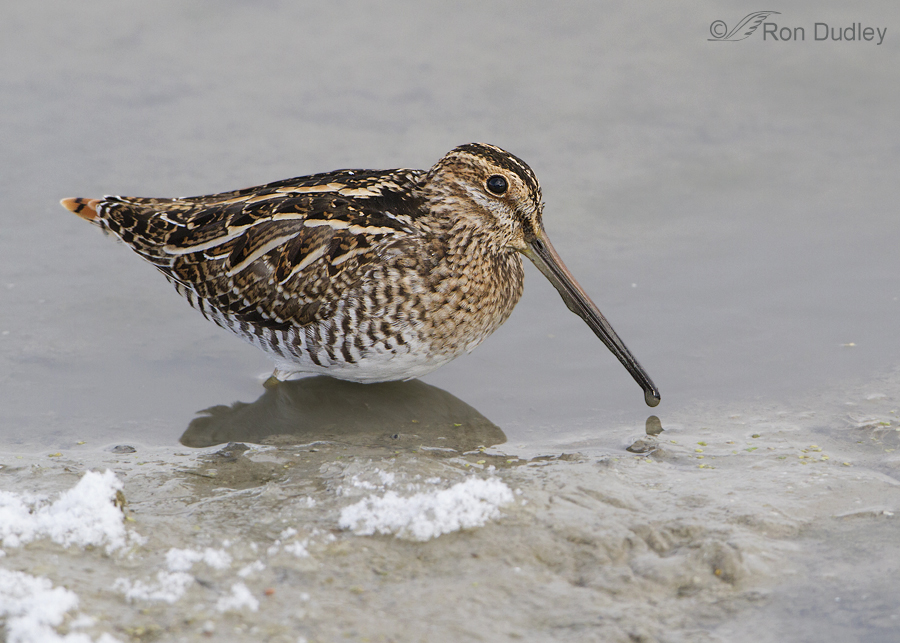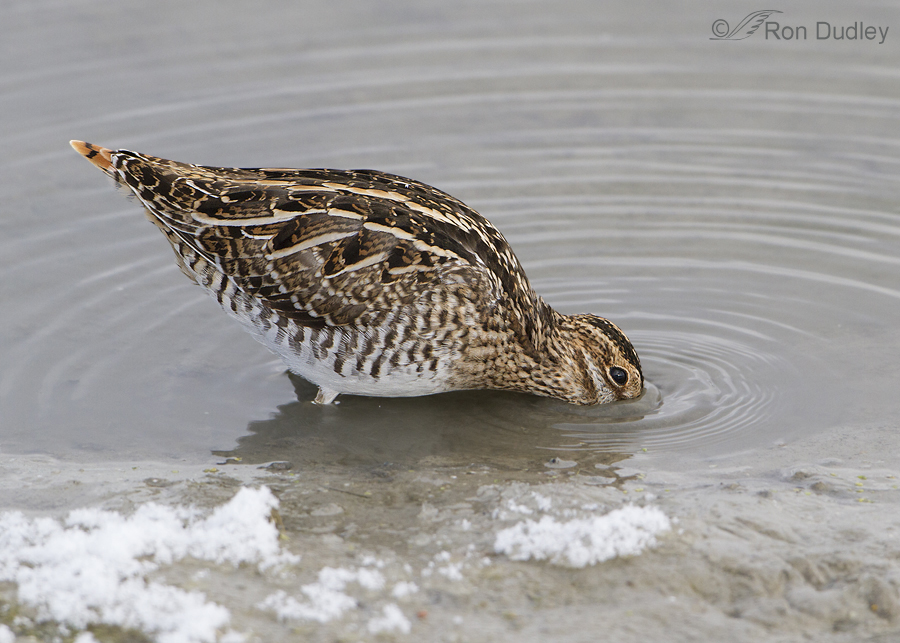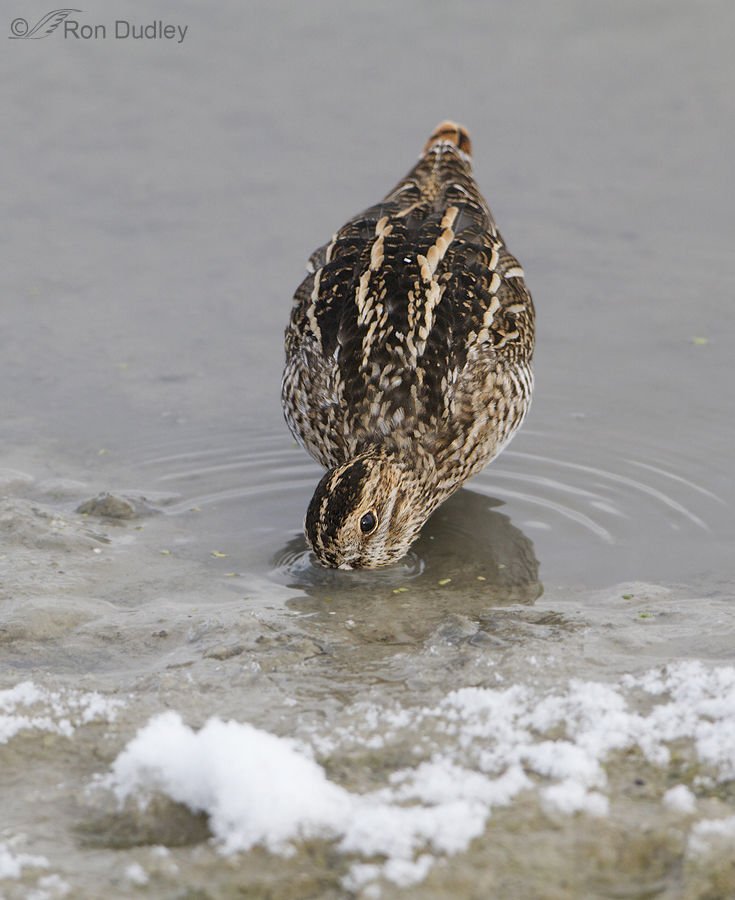A week ago today I had my best photo opportunity with the elusive Wilsons’s Snipe. Several of them, in fact. And this time they gave me an intimate look at their feeding behavior.
1/1000, f/8, ISO 640, 500 f/4, 1.4 tc
It had snowed recently and the muddy shoreline preferred by the species for feeding didn’t provide the most attractive setting but here I was happy to get three of them in the same shot, despite the fact that I didn’t have enough depth of field at f/8 to get the foreground bird as sharp as I like.
1/1000, f/6.3, ISO 640, 500 f/4
Notice the namesake long, probing bill. The word “snipe” comes from “snite,” a variant of “snout” so the species is appropriately named.
It was fascinating to watch these birds feed. They would often plunge their entire beak deep into the very soft mud and maintain that position for several seconds as they used the sensory pits at the tip of the beak to search for small invertebrates. The end of the beak is very flexible and can be opened and closed with no movement at the beak base. They were swallowing food without withdrawing their bills from the mud.
Note the length of the bill in this shot…
1/1000, f/6.3, ISO 640, 500 f/4
and how deeply it is plunged into the soft mud. They often immerse their entire bill and forehead to the eyes in the water/mud and at times only the top of the back can be seen above water.
1/1000, f/6.3, ISO 640, 500 f/4
Here’s a more intimate look at this feeding behavior from another angle.
These birds sometimes feed on larger invertebrates like earthworms but they typically beat them into several pieces before swallowing them.
Yesterday we tried to locate these snipes once again but failed. I suspect the intense weekend hunter activity may have scared them off.
Ron






They’re standing out in the open! They migrate through here 2x a year and after years of trying, my prized photo is of an eye. Awesome series of photos. Beautiful the way their feathers fall across their backs and wings. Beautiful!!!
Fascinating and delightful. I do love to have education attached to the beauty you give us. Thank you.
And, just for a change, you are being hard on yourself – I certainly didn’t notice that the bird in the foreground was lacking in any clarity – I was grateful to see three of them.
These wonderful shots demonstrate so well the value of having their eyes paced so far back…found this is spam, but at least I found it….thanks.
Fantastic photographs, Ron! Don’t you love their warm plumage?
The neatest thing about getting into photography has been the fun involved in learning about the subjects and their surroundings. Quite an education!
Thanks for explaining where the name comes from. The only thing I’ve ever known about snipes is that in college people used to talk about going ‘snipe hunting’, and they never would believe me that a snipe was actually a real bird… I love these photos, both for the behaviors they show and the way they showcase the gorgeous plumage.
Outstanding! Who knew learning could be so much fun…!
Thanks for such a great blog.
I’m having as much fun learning some of this stuff as anyone, Bill.
Beautiful sequence Ron. And your thoughtful observations always add so much to your Incredible Photography !
John, occasionally I get so caught up in watching behaviors that I have to be careful not to forget to click the shutter.
What sensational shots Ron! Thanks so much for sharing them!
Charlotte
Thanks, Charlotte.
This post is fascinating. I learned so much I didn’t know about Wilson’s Snipe. I’m so grateful that you are able to view and record with your photographs the behaviors that you do. I’m unable to be there in person, but with your photos and narrative it feels as if I am. Heartfelt thanks. I don’t say it very often, but I feel it with every post.
No need to say it often, Janet – you said it so very well here…
Very neat. So glad you’ve been getting more contact with them. It benefits us for sure!
Thank you, Deb.
Excellent as usual – love these behavioral shots. Wonderful lesson, Ron, many thanks!
Thanks, Dick. I’m glad you appreciate behaviors like I do.